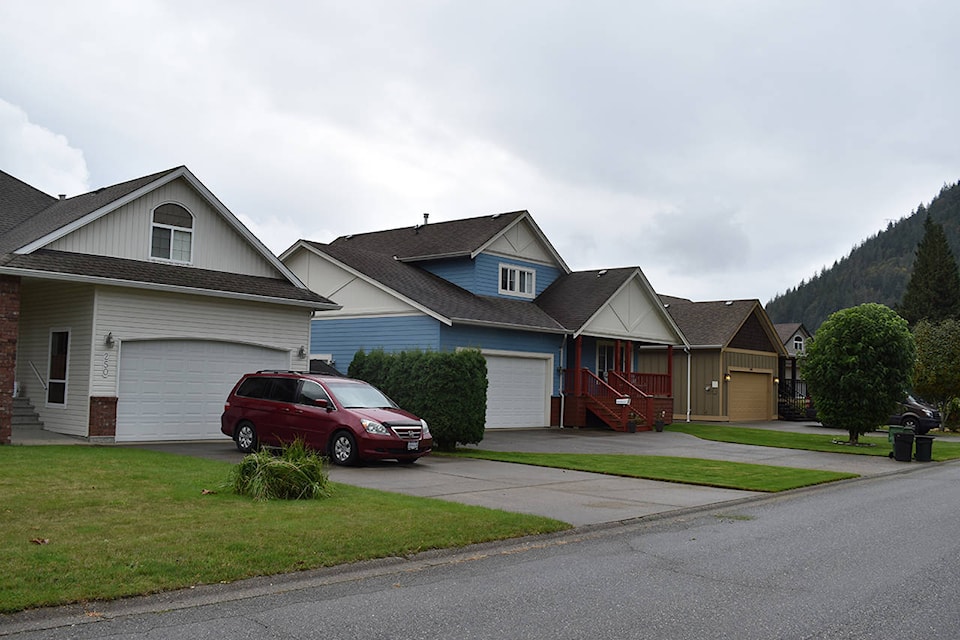By Freddy Marks
Cold weather hasn’t put a damper on the red hot real estate market in the Fraser Valley. January home sales in Chilliwack and District posted a 102 per cent increase in year-over-year monthly sales, as inventories fell to record lows amid the tightest market the area has ever seen.
The number of new listings saw a slight increase, but did nothing to calm the unprecedented frenzy of sales activity, which pushed the benchmark single-family home price to $661,300, up 13.7 per cent on a year-over-year basis.
RELATED: B.C. residential real estate prices have gone up by 16% since last January: report
With so many people seeking a limited number of listings, multiple offers are inevitable.
Listings are sometimes sold before the signs even go up; detached homes are on the market for an average of 65 days in the Okanagan and the North, and a mind-bending 31 days or less in the Fraser Valley.
Buyers want to remain in the southern province where mild winters are the norm, and this had lead to the expansion of upper Fraser Valley communities once thought to be too far out.
If the goal is to sell your home, it is an exciting time. But the biggest challenge is yet ahead, and clients are unsure how to find a new home on the other side of the close in this fast-paced market.
So, how can you locate, vet and purchase a property in such a low inventory market? A qualified realtor can help improve your odds of successfully finding property in this low inventory market, especially when it comes to some unconventional alternatives.
Building your next home
Building your dream home can take longer than moving to an existing dwelling, but, when faced with only a handful of listings in your price range and area, it can be a very satisfying process.
If you plan to build, you will be seeking bare land or land with older dwellings and existing services. Assessing and buying vacant land has different down payment requirements and you need to be aware of the extra financial requirements of a bare land loan or mortgage.
RELATED: B.C. takes over homeowner grant applications, raises eligibility
There are rural development subdivisions in many communities in the Interior that offer one to 10 acre plots with pre-planned access to outdoor activities and spaces.
Finding a rural development subdivision can make vetting a property easier, as the developer would have had to comply with subdivision title regulations that can eliminate some of the steps needed before buying.
Buying a resort or recreational property
After a year of travel restrictions, purchasing a property in a resort area can offer some great options for full-time living.
Many resort development properties will feature upgraded finishes, pools, spas, saunas and other features that make them particularly desirable for a full-time living space. Resort communities often have both summer and winter activity draws: downhill skiing for winter and golfing or hiking in summer.
Remote and rural properties, on and off the grid.
With the permanence of work from home solutions, crime in urban areas and our ongoing health crisis, rural markets are being sought after for their safety and security, and affordable prices.
Living remote and rural is not what it used to be with the modern conveniences of satellite internet, solar and renewable energy sources, and the opportunity to raise your own food.
RELATED: ‘Hope for the best, prepare for the worst:’ More Canadians interested in survivalism
Even before the pandemic began there had been a resurgence in remote living, a trend that has continued to gain popularity.
It all comes down to planning, as well as using alternate forms of heating, food storage, water pumping and access. Some remote residents use alternate modes of transportation in the winter months for access, such as snowmobiles. Solar energy can be augmented with water and wind turbines to provide a year round off-grid power supply.
If being off the grid sound like too much work, consider finding land that has power at the lot line and budget for bringing in power to your home.
Having a flexible strategy will ensure that selling your home won’t leave you scrambling in a tight market. If you are not sure what your plan is, then line up a rental to buy yourself some time after your sale: then you won’t be under pressure to make a rash decision or settle on a property that doesn’t meet your needs.
Buying a home in a low inventory market takes patience and, above all else, a flexible attitude. Be willing to make some concessions and keep an open mind about what changes you can make later with renovations and repairs.
RELATED: OPINION: Are investors coming to Chilliwack to create bidding wars for local real estate?
Always leave some negotiating room at the top of your budget in case you run into a multiple offer situation.
Some buyers end up outbidding each other and paying well over asking price, so don’t max out your budget on your initial offer to allow you to improve the deal if someone else jumps in.
In conclusion, you can also make your home bid offer more appealing to sellers by limiting the number of contingencies and being open to working with the sellers needs for possession dates.
As always, the most important asset will be your relationship with an experienced Realtor to guide you through your options and make timely decisions to successfully navigate your next purchase.
news@ahobserver.com
Like us on Facebook and follow us on Twitter
